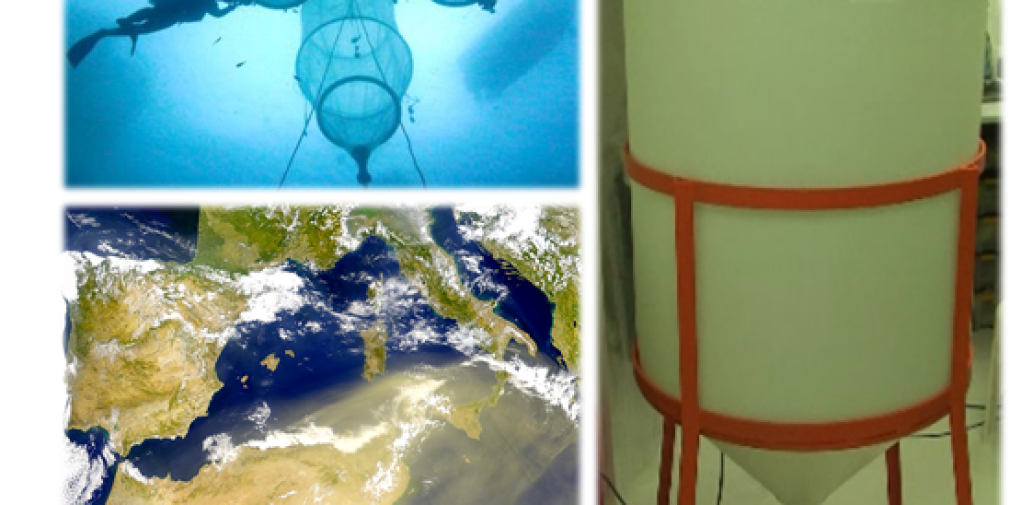L'OBSERVATOIRE
L'OBSERVATION
- Variables
- Stations d'observation
- Plateformes
- Services d'observation
- Organigramme
- Données d'observation
RESSOURCES

COMPORTEMENT DES ÉLÉMENTS BIOGÉOCHIMIQUES EN MÉDITERRANÉE À L'INTERFACE AIR-MER DANS UN CONTEXTE DE CHANGEMENT CLIMATIQUE
LE 20 NOVEMBRE 2015 à 14h00 en salle Trégouboff.
Directrice de Thèse : Cécile GUIEU
Composition du Jury : Catherine JEANDEL (Rapporteur), Xavier MARI (Rapporteur), Elvira PULIDO-VILLENA (Examinateur), Patrizia ZIVERI (Examinateur), Stéphane BLAIN (Président du Jury), Cécile GUIEU (Directrice de Thèse)
Résumé de la Thèse :
L’objectif de cette thèse a été d’étudier le comportement de certains éléments biogéochimiques dans le milieu marin (carbone, azote, phosphore, fer) dans un contexte de changement climatique, dans un environnement assimilable à un modèle de l’océan mondial et particulièrement soumis aux pressions anthropiques : la Méditerranée. Grâce à des méthodes analytiques et expérimentales alternatives, nous avons évalué l’effet biogéochimique de deux forçages : l’acidification de l’océan et les dépôts de poussières sahariennes. Dans un premier temps, nous avons montré que dans une région dite Low Nutrient Low Chlorophyll (LNLC) l’effet de l’acidification de l’océan sur les cycles marins de l’azote (N), du phosphore (P) et du fer (Fe) sera surement négligeable. L’acidification des eaux de surface appauvries en N et P n’affecterait pas la spéciation de ces éléments, et la composition de la communauté planctonique, n’étant pas significativement modifiée, n’induirait pas de changement dans la dynamique des nutriments inorganiques. Dans un deuxième temps, les expériences menées pendant cette thèse nous ont permis de mieux paramétriser les processus post-dépôts des nutriments atmosphériques à la surface de l’eau de mer lors d’un évènement saharien. Les échanges dissous/particulaire ont lieu sur une courte échelle de temps. Ils sont à la fois contrôlés par la dynamique verticale des particules et la nature de la matière organique dissoute (DOM) pouvant s’agréger sur les particules lithogéniques. Dans des conditions d’acidification de l’océan, alors que la dissolution des éléments anthropiques adsorbés sur les poussières sahariennes, tels que l’azote inorganique, ne sera pas affectée, celle des éléments d’origine crustale (P et Fe) pourrait être accrue ou accélérée selon les agrégats organique-minéral formés. Le rôle majeur du processus d’agrégation dans la mise à disposition des nutriments atmosphériques a été mis en évidence par une rapide et importante formation abiotique de particules exopolymériques transparentes (TEP) juste après le dépôt de poussières sahariennes. Moteur de la pompe lithogénique du carbone, la diminution du taux de formation abiotique des TEP sous des conditions de pression partielle en dioxyde de carbone (pCO2) élevée, impliquerait un flux de carbone organique particulaire (POC) moins important à l’échelle du dépôt atmosphérique. Finalement, un changement de la biodisponibilité des nutriments atmosphériques pourrait impacter la pompe biologique de carbone à l’échelle d’un évènement saharien, et in fine affecter la pompe lithogénique liée à la nature de la DOM.
Abstract:
The objective of this thesis was to study the fate of some biogeochemical elements in the marine system (carbon, nitrogen, phosphorus and iron) in the context of climate change in the environment related as a model of the global ocean and particularly sensible to anthropogenic pressures: the Mediterranean Sea. By using alternatives methodologies (analytical and experimental), we assessed the biogeochemical effect of two forcings: the ocean acidification and the dust deposition. Firstly, we showed that in the Low Nutrient Low Chlorophyll (LNLC) area the effect of the ocean acidification on the marine cycle of nitrogen (N), phosphorus (P) and iron (Fe) will be likely negligible. The pH decrease of the surface waters depleted in N and P would not affect the speciation of these elements, and the absence of effect on the composition of the plankton community would not lead to a shift in the dynamic of inorganic nutrients. Secondly, the experiments performed during this thesis allowed a better parametrization of the post-depositional processes of atmospheric nutrients in the surface seawater after a Saharan event. The exchanges dissolved/particulate occurred in the short timescale. They were controlled by both the particles dynamic and the nature of the dissolved organic matter (DOM) that can aggregate with the lithogenic particles. Under ocean acidification conditions, while the dissolution of anthropogenic elements adsorbed onto dust, such as the inorganic nitrogen, will not be affected, the dissolution of the crustal elements (P and Fe) could be higher and faster according the formation of organic-dust aggregates. The major role of the aggregation process on the availability of atmospheric nutrients was highlighted by the rapid and large abiotic formation of transparent exopolymeric particles (TEP) following the dust deposition to the surface waters. Driver of the lithogenic carbon pump, the decrease in the abiotic formation rate of TEP under high partial pressure of carbon dioxide (pCO2) conditions would lead to a less efficient of the flux of particulate organic carbon (POC) at the event timescale. Finally, a change in the bioavailability of atmospheric nutrients could impact the biological carbon pump at the event timescale, and ultimately it could affect the lithogenic pump linked to the nature of DOM.
Modifié le